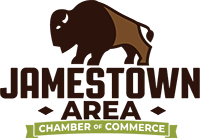It’s no secret that large corporations often dominate the market, brandishing bottomless budgets, household-name recognition, and vast infrastructure. But the story of modern business isn't just about scale—it’s about agility, focus, and the tools available to anyone with a good idea and the hustle to back it. In today's digital economy, size no longer dictates who wins; it's about how intelligently a business can move. From local shops to niche e-commerce brands, small businesses are learning how to sidestep the muscle of large competitors with strategies and tech tools that reward innovation over brute force.
Niche Focus Over Mass Appeal
One of the most effective ways smaller companies edge out bigger ones is by narrowing the lens. While larger corporations cast wide nets, smaller players can concentrate on deeply understanding a specific audience segment. This focus allows them to deliver more personalized products and services, building loyalty where big brands often feel impersonal. When customers feel seen and understood, they come back—and they tell their friends.
Leveraging Automation Without the Overhead
Automation is often portrayed as the territory of major tech companies, but that's a myth that deserves retiring. Affordable platforms like Zapier, Mailchimp, and Notion allow even the leanest teams to build streamlined workflows that rival those of enterprises. Whether it’s auto-responding to leads, organizing inventory, or handling bookkeeping, these tools eliminate the kind of grunt work that burns time and blurs focus. Small businesses that automate with intention can operate with the sophistication of a much larger team—without bloating the payroll.
Design Depth Without the Studio Budget
Small businesses looking to elevate their marketing game can turn to emerging 2D to 3D conversion challenges as an opportunity rather than a hurdle. Mastering the shift from flat design to dimensional visuals unlocks a new layer of storytelling that adds richness to otherwise standard promotional materials. Many tools now offer features like real-time rendering and intuitive interfaces, enabling high-quality 3D models from original 2D artwork. These capabilities can be used to create compelling product mockups, innovative packaging concepts, and immersive content that commands attention and enhances brand credibility.
Storytelling That Hits Harder Than Ads
When budgets don’t allow for splashy ad campaigns, the best alternative is often better storytelling. Smaller companies can craft narratives around their values, their origin, or even their mistakes—because customers are starved for authenticity. A well-told story on social media, in a blog, or through a newsletter often connects deeper than any billboard ever could. People want to feel something when they spend their money, and that’s something big brands rarely deliver at scale.
Agility in Experimentation
Without layers of management or brand guidelines written in stone, small businesses have the freedom to experiment—fast and often. Whether it's trying out a TikTok trend, beta-testing a product with loyal customers, or pivoting entirely based on feedback, adaptability is a major advantage. Big companies often lose weeks or months getting decisions approved; smaller ones can make them over coffee. The best ideas often emerge from quick pivots, not committees.
Data, Without the Analyst Team
Access to useful data is no longer gated by expensive software or an in-house analytics department. Tools like Google Analytics, Hotjar, and Shopify dashboards offer digestible, real-time insights that inform smarter business decisions. Small business owners who tap into these tools regularly begin to spot patterns, anticipate customer needs, and optimize their operations accordingly. It’s not about having more data—it’s about paying closer attention to the right parts of it.
Building Partnerships, Not Empires
Rather than trying to outbuild the competition, smaller businesses can gain ground through strategic partnerships. Collaborations with complementary brands, local influencers, or even friendly competitors can expand reach without doubling the workload. These kinds of alliances foster community, cross-promotion, and trust in ways that no solitary ad campaign can touch. When businesses work together rather than trying to dominate alone, everyone wins.
Customer Experience as the Frontline
The one place where smaller businesses can consistently outshine the giants is customer experience. Big brands often rely on call centers, bots, or faceless contact forms—opening the door for smaller players to build personal, human relationships. Quick response times, handwritten notes, or a name remembered can do more for customer retention than any loyalty app. Experience is where emotion lives, and emotion is where customers make decisions.
Competing with larger companies doesn’t mean trying to become one. In fact, it’s often the opposite approach that wins. By staying small but smart, focused but flexible, and personal instead of polished, small businesses can forge a path that isn’t just sustainable—it’s magnetic. In a marketplace crowded with giants, the ones who stand out are those who choose to play a different game entirely.
Discover the vibrant community of Jamestown and explore endless opportunities for growth by visiting the Jamestown Area Chamber of Commerce today!

